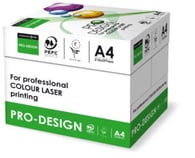Is Your School Copier Hiding a Productivity-Killer?
 The move in recent years to print off study materials from internet syllabus resources rather than invest in so many textbooks has certainly brought cost savings and efficiencies, but with it, a greater-than-ever demand for paper.
The move in recent years to print off study materials from internet syllabus resources rather than invest in so many textbooks has certainly brought cost savings and efficiencies, but with it, a greater-than-ever demand for paper.
Budgets are tighter than ever, and the further we can make them go, the better. Perhaps the single largest consumable item for the average school is copier paper, so it is perhaps no surprise that schools will look for ways to bring this considerable cost down. However, there are a few times when the cheaper option turns out to be a false economy. This is never truer than when purchasing copier paper.
When asked to point to the device that causes the most hassle and inconvenience in the school office, most staff would unhesitatingly select the copier for an accusatory glare.
The Hidden Dangers of Ultra-Cheap Copier Paper
Not all paper is the same. There are many aspects of its production where some manufacturers can cut corners, or make bad decisions, all of which will negatively impact the performance of your office copier. For example:
- Reduced Thickness and Rough Texture - Ultra-cheap paper tends to be thinner, meaning that the paper is less opaque, and therefore is not so effective for double-sided printing – potentially doubling the REAL cost of the paper where thicker paper would have worked in duplex mode. It also can have an uneven surface, making your printing messy and inconsistent.
- ‘Alternative’ Sources – some cheap paper is not made from wood paper pulp at all but instead from agricultural residues such as straw, corn husks, or sugar cane. While this might be a win for the environment, such paper tends to produce a lot more dust than more traditional paper and can cause significant reliability and consistency issues. Speaking of dust…
- Paper Dust - Cheap paper will often produce more dust. This might not sound like a big deal, but it’s a massive contributor to messing with the internals on your copier and increases the frequency of jams. It’s also bad for your health, and can get into the air in your office. Many school offices are fairly small, and the weather in the UK doesn’t often lend itself to keeping windows open, so over time airborne paper dust can accumulate, potentially posting a risk to the health of those working in the same room.
- Cut and Size - Paying less for copier paper nearly always means less has been spent on producing the paper. Cheap paper often isn’t exactly the advertised size, or cut at a perfect angle. Both of these factors increase the likelihood of paper jams, printing errors, and problems in the paper tray.
- Sustainability - Cheaper paper may be sourced from non-sustainable sources, increasing the damage caused environmentally, socially, and economically. At Paper Plus, we work hard to ensure where possible, all of the paper we source and sell has either the PEFC, the FSC, or the EU Eco
- Moisture Content - Cutting corners on paper production can result in paper with a higher moisture level. This makes it more susceptible to cause jams, and curl at the edges during the printing process.
The Financial Impact of Cheap Copier Paper
When you buy cheap paper, you don’t get one of these problems, you typically get several – or even all of them! Combined, they dramatically increase the likelihood of your copier needing additional maintenance, creating an additional cost. They also make your office less efficient, while potentially posing a health risk to office staff. Paper jams also mean you will waste more of the paper.
When you combine all of these factors, along with the reduction in the life expectancy of your copier, it becomes clear just how big a saving buying quality copier paper can return.
Value-For-Money Copier Paper That’s Fit for Purpose
There are many different types of copier paper. Some are perfect for standard mono copies, while some are designed to be better for colour copying and printing. Using the best one for the results you require makes sense, whether that’s a functional white paper, or even a parchment paper for certificates.
We even have paper that comes wrapped in recyclable plastic instead of the more traditional waxed paper, to prevent problems with moisture seeping into the paper during storage.
Here’s a handy tip for paper buying – instead of focussing on paper weight (GSM) which is largely irrelevant as far as your copier is concerned, focus instead on the paper thickness – this is measured in microns. Did you know that Paper Plus can supply a 70GSM paper that is virtually the same thickness of “old” 80GSM paper? There are ways you can cut costs without sacrificing performance or reliability – so if you do need to look at where savings can be made, just let us know – we will be happy to advise you.
Because we know about paper...
Whatever your needs are, get in touch with us. We’re a friendly bunch with more than 18 years’ experience helping schools to make the most of their budgets. We’ll make sure you get a great deal on your copier paper, without compromising on quality.



.png?width=720&name=Untitled%20design%20(29).png)
